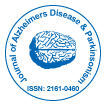Notre groupe organise plus de 3 000 séries de conférences Événements chaque année aux États-Unis, en Europe et en Europe. Asie avec le soutien de 1 000 autres Sociétés scientifiques et publie plus de 700 Open Access Revues qui contiennent plus de 50 000 personnalités éminentes, des scientifiques réputés en tant que membres du comité de rédaction.
Les revues en libre accès gagnent plus de lecteurs et de citations
700 revues et 15 000 000 de lecteurs Chaque revue attire plus de 25 000 lecteurs
Indexé dans
- Index Copernic
- Google Scholar
- Sherpa Roméo
- Ouvrir la porte J
- JournalSeek de génamique
- Clés académiques
- JournalTOC
- Infrastructure nationale du savoir de Chine (CNKI)
- Bibliothèque de revues électroniques
- Recherche de référence
- Université Hamdard
- EBSCO AZ
- OCLC-WorldCat
- Catalogue en ligne SWB
- Bibliothèque virtuelle de biologie (vifabio)
- Publons
- Fondation genevoise pour l'enseignement et la recherche médicale
- Euro Pub
- ICMJE
Liens utiles
Revues en libre accès
Partager cette page
Abstrait
Dynamic Aspects of Amyloid Fibrils of α-Synuclein Related to the Pathogenesis of Parkinson’s Disease
Satoru Fujiwara
α-synuclein (αSyn) is a 140 amino acid protein of unknown function, abundant in presynaptic terminals of nerve cells. Filamentous aggregates (amyloid fibrils) of αSyn have been shown to be involved with the pathogenesis of Parkinson’s disease, a progressive neurodegenerative disorder. Elucidation of the mechanism of amyloid fibril formation of αSyn is thus important for elucidation of the pathogenesis mechanism of this disease. Amyloid fibril formation is observed for many proteins including, for example, the amyloid-β peptide, the prion protein, and transthyretin. Extensive studies on amyloid fibril formation have characterized structural and kinetic properties of these proteins during fibril formation. Whereas involvement of unfolding/misfolding of the proteins with fibril formation implies that the dynamics of the proteins plays an important role in fibril formation, the dynamic aspects of fibril formation have not been explored very much. In this review, dynamic behavior of αSyn in the monomeric and fibril states is described, based on our recent study on the dynamics of αSyn using quasielastic neutron scattering, by which the dynamics of proteins can be directly measured. It was found that diffusive global motions of the entire molecules and segmental motions within the molecules are observed in the monomeric state but largely suppressed in the fibril state. On the other hand, the amplitudes of the local motions such as side chain motions were found to be larger in the fibril state than in the monomeric state. This implies that significant solvent space exists within the fibrils, which is attributed to αSyn molecule within the fibrils having a distribution of conformations. The larger amplitudes of the side chain motions in the fibril state than in the monomeric state imply that the fibril state is entropically favorable. Implications of this unusual dynamic behavior of αSyn fibrils are discussed in terms of possible clinical relevance.
Revues par sujet
- Agriculture et Aquaculture
- Biochimie
- Chimie
- Food & Nutrition
- Génétique et biologie moléculaire
- Géologie et sciences de la Terre
- Immunologie et microbiologie
- Ingénierie
- La science des matériaux
- Le physique
- Science générale
- Sciences cliniques
- Sciences environnementales
- Sciences médicales
- Sciences pharmaceutiques
- Sciences sociales et politiques
- Sciences vétérinaires
- Soins infirmiers et soins de santé
Revues cliniques et médicales
- Allaitement
- Anesthésiologie
- Biologie moléculaire
- Cardiologie
- Chirurgie
- Dentisterie
- Dermatologie
- Diabète et endocrinologie
- Gastro-entérologie
- Immunologie
- La génétique
- Maladies infectieuses
- Médecine
- Microbiologie
- Neurologie
- Oncologie
- Ophtalmologie
- Pédiatrie
- Recherche clinique
- Soins de santé
- Toxicologie

 English
English  Spanish
Spanish  Chinese
Chinese  Russian
Russian  German
German  Japanese
Japanese  Portuguese
Portuguese  Hindi
Hindi